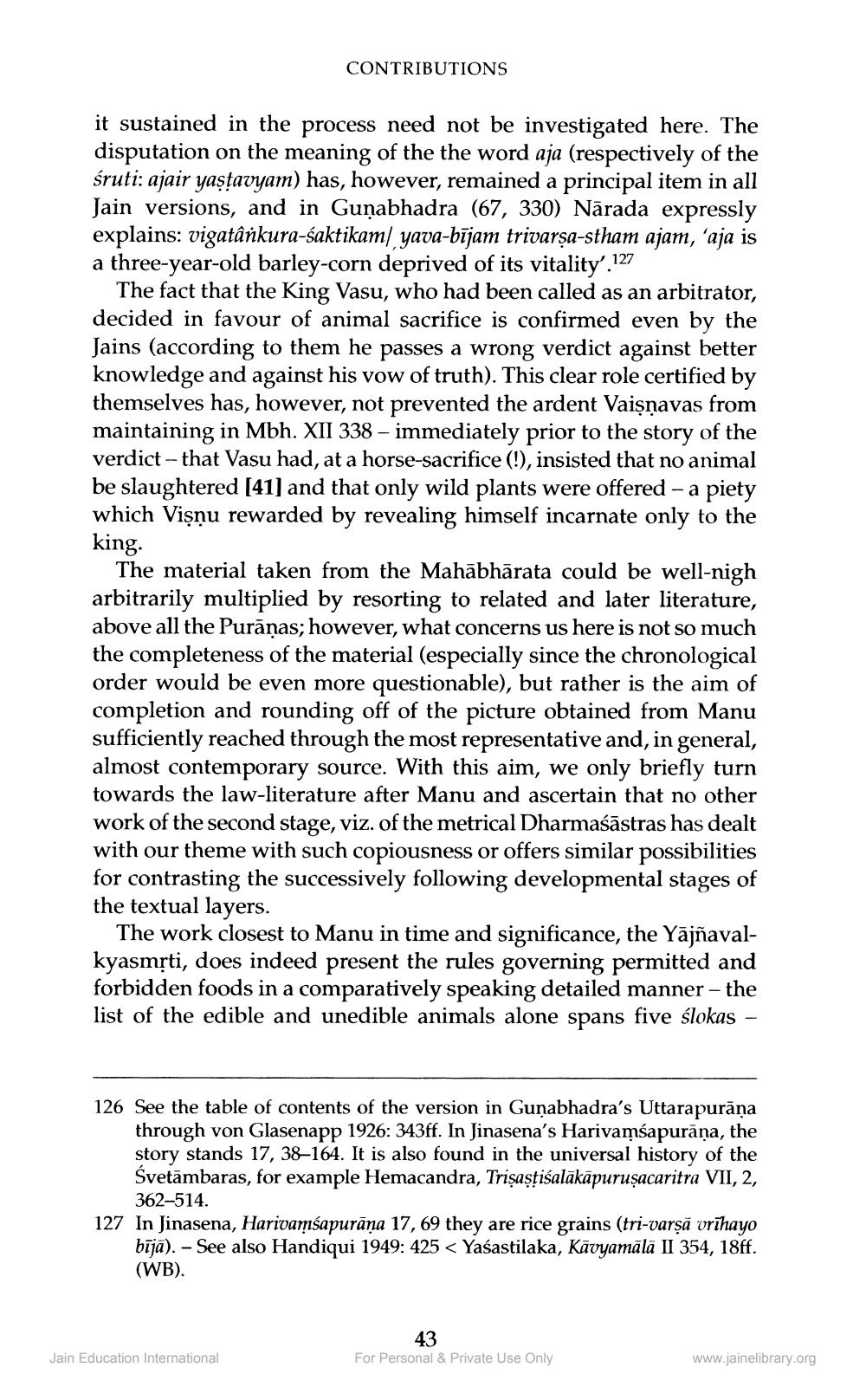________________
CONTRIBUTIONS
it sustained in the process need not be investigated here. The disputation on the meaning of the the word aja (respectively of the śruti: ajair yaṣṭavyam) has, however, remained a principal item in all Jain versions, and in Gunabhadra (67, 330) Narada expressly explains: vigatânkura-śaktikam/ yava-bījam trivarṣa-stham ajam, 'aja is a three-year-old barley-corn deprived of its vitality'.12
The fact that the King Vasu, who had been called as an arbitrator, decided in favour of animal sacrifice is confirmed even by the Jains (according to them he passes a wrong verdict against better knowledge and against his vow of truth). This clear role certified by themselves has, however, not prevented the ardent Vaisnavas from maintaining in Mbh. XII 338 – immediately prior to the story of the verdict - that Vasu had, at a horse-sacrifice (!), insisted that no animal be slaughtered [41] and that only wild plants were offered - a piety which Visnu rewarded by revealing himself incarnate only to the king.
-
The material taken from the Mahabharata could be well-nigh arbitrarily multiplied by resorting to related and later literature, above all the Purāņas; however, what concerns us here is not so much the completeness of the material (especially since the chronological order would be even more questionable), but rather is the aim of completion and rounding off of the picture obtained from Manu sufficiently reached through the most representative and, in general, almost contemporary source. With this aim, we only briefly turn towards the law-literature after Manu and ascertain that no other work of the second stage, viz. of the metrical Dharmaśāstras has dealt with our theme with such copiousness or offers similar possibilities for contrasting the successively following developmental stages of the textual layers.
The work closest to Manu in time and significance, the Yājñavalkyasmṛti, does indeed present the rules governing permitted and forbidden foods in a comparatively speaking detailed manner - the list of the edible and unedible animals alone spans five slokas
127
126 See the table of contents of the version in Gunabhadra's Uttarapurāņa through von Glasenapp 1926: 343ff. In Jinasena's Harivamsapurana, the story stands 17, 38-164. It is also found in the universal history of the Śvetämbaras, for example Hemacandra, Triṣaṣṭiśalākāpuruṣacaritra VII, 2,
362-514.
Jain Education International
127 In Jinasena, Harivamsapurāṇa 17, 69 they are rice grains (tri-varṣā vrīhayo bījā). - See also Handiqui 1949: 425 < Yaśastilaka, Kāvyamālā II 354, 18ff.
(WB).
43
For Personal & Private Use Only
www.jainelibrary.org




